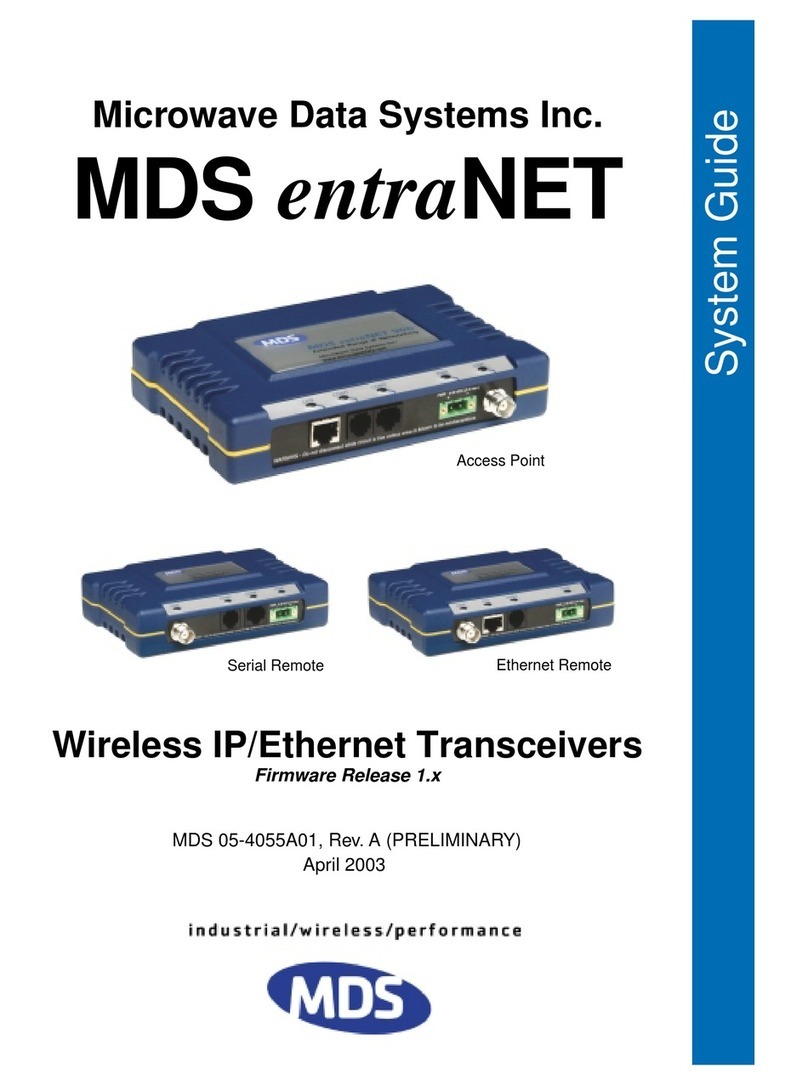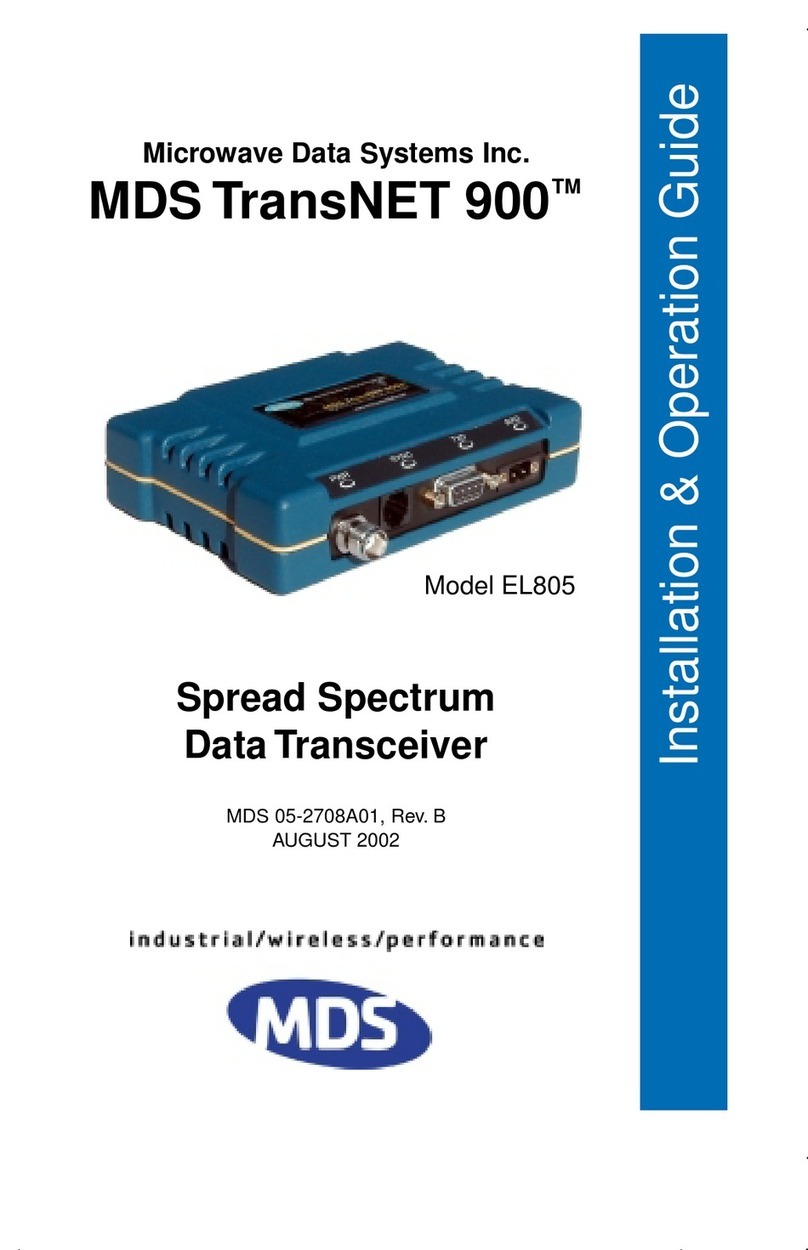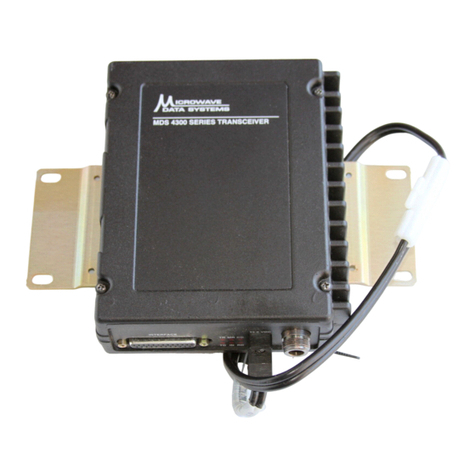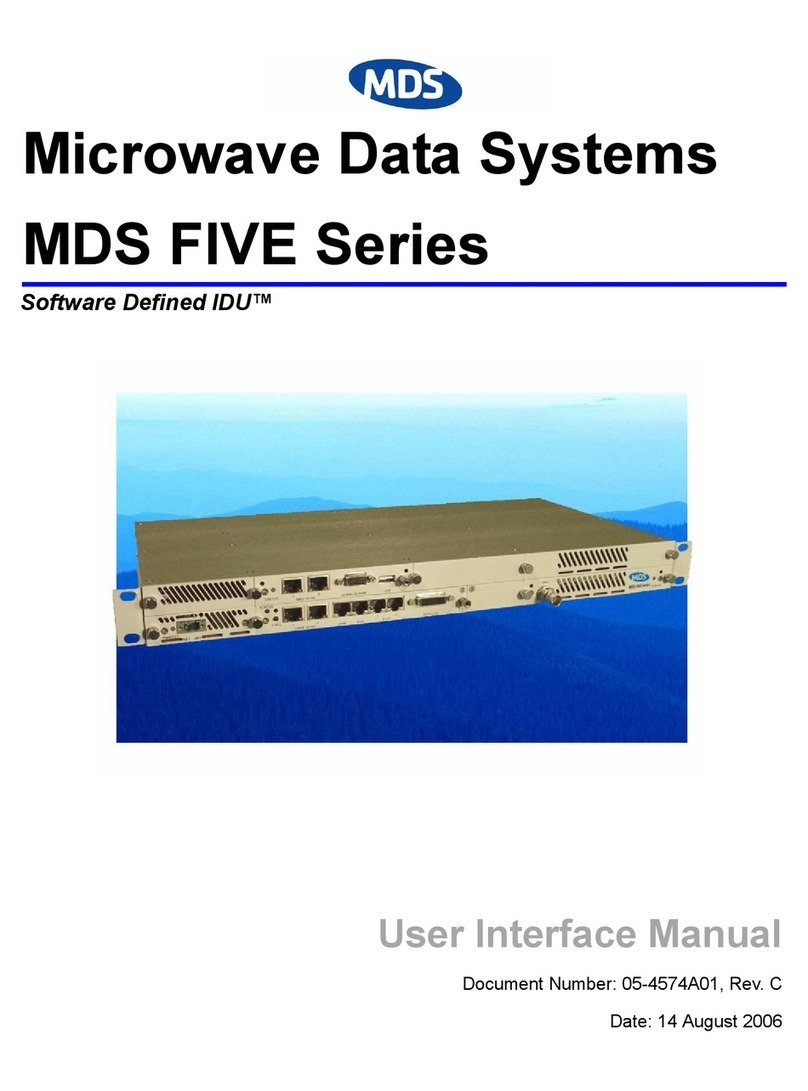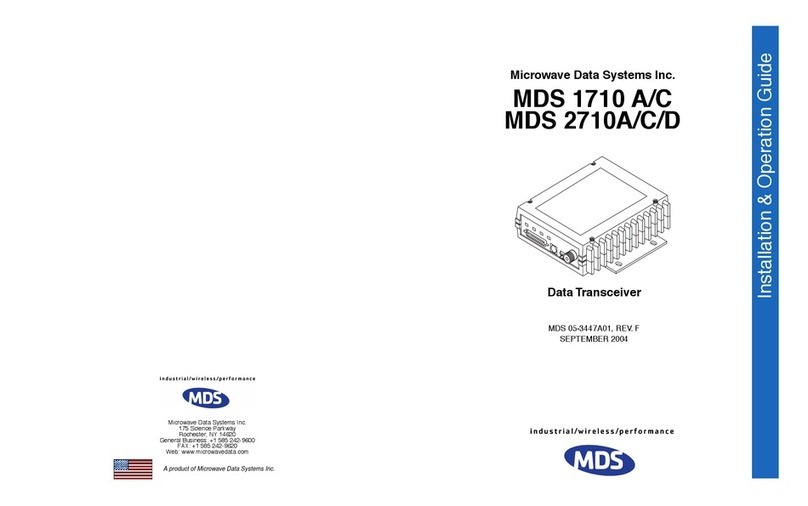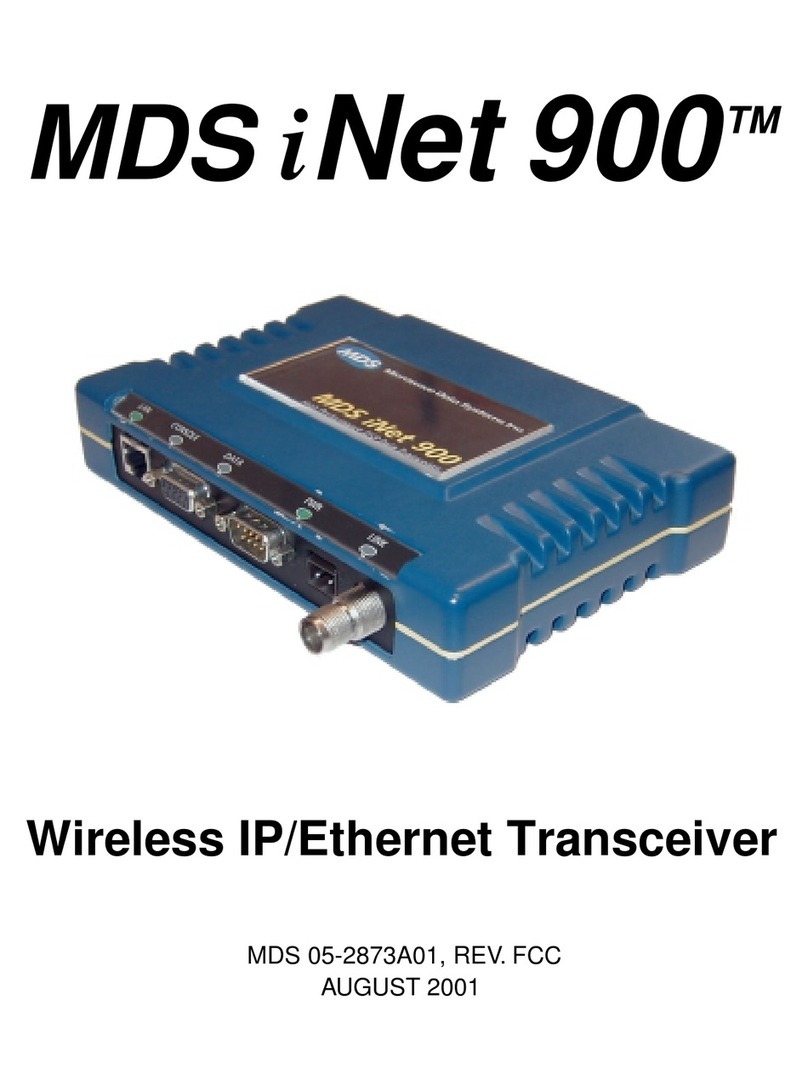
ii MDS 9810 Installation and Operation Guide MDS 05-3301A01, Rev. C
4.5 “Single-Radio”Repeater—Alternative Method ............................................................................24
Interface Wiring..............................................................................................................................24
Software Programming (TDD Command)......................................................................................24
Limitations of Single-Radio Repeaters...........................................................................................25
4.6 Using the Radio’s Sleep Mode ....................................................................................................25
Sleep Mode Example.....................................................................................................................25
5.0 OPERATION.......................................................................................................................26
5.1 Initial Start-up ..............................................................................................................................26
5.2 Performance Optimization ...........................................................................................................26
Antenna Aiming..............................................................................................................................27
Antenna SWR Check.....................................................................................................................27
Data Buffer Setting.........................................................................................................................27
Hoptime Setting .............................................................................................................................27
Baud Rate Setting..........................................................................................................................28
Radio Interference Checks.............................................................................................................28
6.0 PROGRAMMING................................................................................................................28
6.1 Hand-Held Terminal Connection & Start-up ................................................................................28
6.2 Hand-Held Terminal Setup ..........................................................................................................29
6.3 Keyboard Commands ..................................................................................................................30
Entering Commands......................................................................................................................30
Error Messages..............................................................................................................................31
6.4 Detailed Command Descriptions .................................................................................................35
ADDR [1...65000]...........................................................................................................................36
AMASK [0000 0000–FFFF FFFF]..................................................................................................36
ASENSE [HI/LO]............................................................................................................................36
BAUD [xxxxx abc] ..........................................................................................................................36
BUFF [ON, OFF]............................................................................................................................37
CTS [0–255]...................................................................................................................................37
CTSHOLD [0-6000]........................................................................................................................38
DEVICE [DCE, CTS KEY].............................................................................................................38
DLINK [xxxxx] ................................................................................................................................39
DMGAP [xx]...................................................................................................................................39
DTYPE [NODE/ROOT/GATE/PEER] .............................................................................................39
HOPTIME [XSHORT, 16, 20, 25, 32, SHORT, NORMAL, LONG] .................................................40
INIT................................................................................................................................................41
MODE [M, R, R-M].........................................................................................................................41
OWM [xxxxx]..................................................................................................................................42
OWN [xxxxx] ..................................................................................................................................42
PWR [xx–30]..................................................................................................................................42
RSSI...............................................................................................................................................42
RTU [ON/OFF/0-80].......................................................................................................................43
RX [xxxx]........................................................................................................................................43
RXTOT [NONE, 0–1440]................................................................................................................43
SEND [n, -n, +n].............................................................................................................................43
SETUP...........................................................................................................................................44
SHOW [PORT, DC, PWR]..............................................................................................................45
SIMPLEX [ON, OFF]......................................................................................................................45
